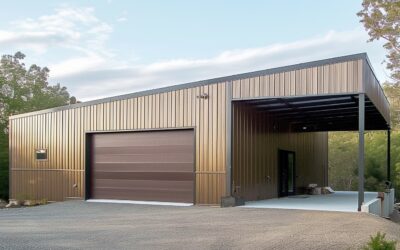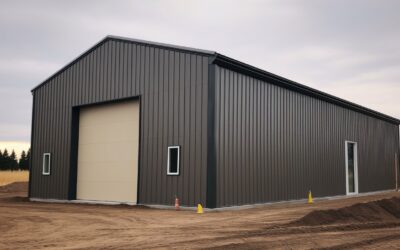Building Resilience: Steel’s Answer to Farming Challenges
Harnessing the power of resilience is a testament to the fortitude of farmers worldwide. In daunting landscapes and changing climate conditions, they have had to strategize, innovate, and face steel farming challenges head-on. The dynamics of the agricultural industry have required the development of robust solutions, and an often overlooked but potent source of strength has been steel. Why steel? What makes it so pivotal to building resilience in farming practices and infrastructure? Let’s dive in.
Understanding steel farming challenges
The overlap of steel and farming may seem odd initially, but their synergies become clear upon closer observation. Farming is not merely the practice of growing crops or rearing livestock anymore. It’s the design and maintenance of structures like farm buildings, silos, equipment housing, and much more. Every structure, big or small, requires strength, durability, longevity, and adaptability. It is here that the role of steel in farming becomes sharply evident.
In an age of volatility, resilience is crucial, and steel is the most durable, versatile, and recyclable construction material on the planet. This remarkable aspect of the material has a direct bearing on addressing steel farming challenges. Its robust properties stand up against the corrosive effects of weather, natural disasters, pests, and the wear and tear of daily operations on a farm, thereby building resilience.
Steel Crop Storage: A Game Changer for Resilient Practices
The role of steel extends beyond construction and infrastructure – it plays a pivotal role in crop storage as well. Steel silos are quintessential to the new-era farming landscape. The steel crop storage advantages are plenty, but it’s the resilience factor that drives the point home. Steel storage systems provide optimum conditions to stop crop spoilage, thereby helping farmers predict their yield and income better.
Boosting animals’ well-being with steel livestock shelters
Caring for livestock involves meeting their fundamental needs: shelter, food, and care. Steel livestock shelters not only provide a safe space for cattle but also ensure that these shelters last longer, are easier to maintain, and can withstand adverse climate conditions. Study the livestock shelters constructed out of steel, and one quickly appreciates the longevity and ease of upkeep these units offer.
Contemplating the environmental impact of steel farming
In reacting to the steel farming challenges, it’s essential to ensure that the resilience built does not compromise the ecosystem. Steel is the most recycled material globally, which contributes significantly to its environmental friendliness. According to the Environmental and Energy Study Institute, it can be recycled numerous times without losing quality or strength – proving its sustainability credentials. Furthermore, the energy used in making steel has also decreased significantly over the years, making steel an ecological and economically viable solution for agricultural practices.
Conclusion: Embracing steel for resilient farming
In an era where unpredictable weather patterns and volatile market demands present an array of challenges for contemporary farmers, steel surfaces as a crucial ally for building resilience. Its unique attributes – strength, longevity, sustainability, and adaptability – make it an excellent choice to address the many steel farming challenges head-on.
Whether it be for constructing resilient farm buildings, establishing effective crop storage systems, or providing durable and comfortable homes for livestock, steel is undoubtedly an answer to farming challenges. Embracing steel for its multi-dimensional benefits not only helps snatch victories from the jaws of apparent agricultural difficulties but also propels farming towards a more sustainable future.
As we forge forward into an age of ever-evolving challenges, let’s celebrate and utilize the strength of steel, the very embodiment of resilience, for superior, sustainable, and resilient farming practices.





